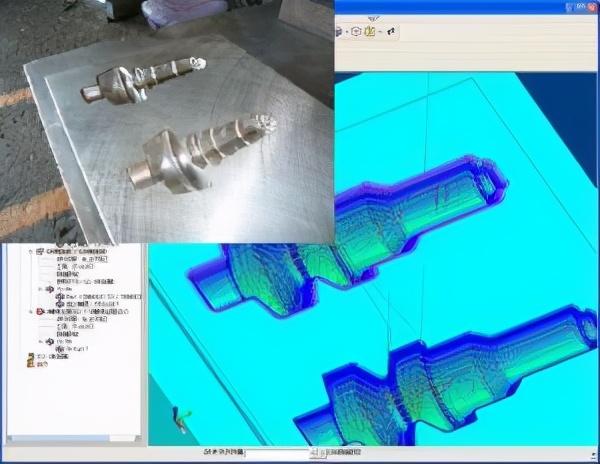更多腾讯海量技术文章,请关注腾讯云技术社区:https://cloud.tencent.com/community
作者:张耀琦
简单介绍Jupyter 是一个笔记本,这个笔记本可以编写和执行代码,分析数据,嵌入内容,以及共享可重复性的工作。Jupyter Notebook (以前成为IPython Notebook)可以在一个简单的笔记本中轻松分享代码,数据,图标以及说明。发布格式也比较灵活:PDF, HTML,ipynb,dsahboards,slides,等等。代码单元是基于输入和输出格式。例如:
安装
有多种方式可以安装 Jupyter Notebook:
使用 pip 安装。在终端中输入 $ pip install jupyter
Windows用户可以使用 setuptools 安装。
* Anaconda 和 Enthought 可以下载 Jupyter Notebook的桌面版。
nteract 可以通过一个桌面应用在 notebook 环境中工作。
Microsoft Azure 提供对 Jupyter Notebook 的托管访问。
Domino Data Lab 提供基于web的notebook。
tmpnb 为个人用户启动一个临时在线的notebook。
主观观点:Windows 下常用Anaconda ,但并不是说 Mac 和 Linux用户就不需要了,个人觉得 Anaconda 都应该尝试一下,启动和管理库都很方便。
入门指南安装 notebook 之后,在终端中输入 $ jupyter notebook 来启动。此时将在 localhost 打开浏览器到notebook的URL,默认是 http://127.0.0.1:8888。Windows 用户打开Command Prompt. 可以在一个dashboard 中看到所有的notebook,打开很方便。当编码和发布的时候,Notebook具有相同的优势。有所有的选项,移动代码,运行cell,更改 kernel,并且运行 NB的时候使用 Markdown
有用的命令
Tab Completion: Jupyter 支持tab 自动补全!可以键入object_name.<TAB>来查看对象的属性。有关cell magics,运行 notebook,探索对象的提示,可以查看 Jupyter docs。
Help: 提供介绍和功能概述。
Quick Reference:运行后打开快速参考。
Keyboard Shortcuts:Shift-Enter将运行一个cell, Ctrl-Enter将在空间内运行cell, Alt-Enter 将运行cell,并在下面插入一个cell. 更多的快捷键请看 here。
语言
本教程的主要内容是讨论在 Jupyter notebooks 中执行python 代码。也可以使用 Jupyter notebooks 来执行 R 语言的代码。
package 管理在Jupyter安装 package时,需要在shell中安装,或者运行感叹号前缀,例如:
!pip install packagename
如果已经编辑了代码,可能需要 reload submodules。IPython 自带重载机制。可以在执行新行之前重新加载所有更改的模块。
%load_ext autoreload %autoreload 2
本教程使用到的一些package:
pandas:通过网址导入数据,创建数据框架,可以很简单的处理数据,进行分析和绘图。请参阅使用 Panda的例子:https://plot.ly/pandas/。
NumPy:用于科学计算的package,用于代数,随机数生成,与数据库集成和管理数据的工具。请参阅使用 Numpy 的例子:https://plot.ly/numpy/。
SciPy:一个基于Python的数学、科学和工程库。
Plotly:用于制作交互式,达到出版品质图表的图形库。更多统计,科学,3D图表等,请参阅:https://plot.ly/python
如果使用的是Anaconda 在Environments中可以发现,前三个库都已经默认帮你下载安装好了。然后把过滤条件改为All,搜Plotly,安装即可。非常方便
Import 数据
可以使用 pandas 的 read_csv() 函数来导入数据。下面的示例中,导入了一个 hosted on github 的csv,并使用Plotly将数据展示在一个table中。(table using Plotly)
plotly.plotly.iplot() 函数是在线的,需要先设置账号和key,具体请参阅:https://plot.ly/python/getting-started/
使用dataframe.column_title 来索引 dataframe:
pandas大多数的函数也适用于整个 dataframe。例如,调用 std() 计算每列的标准差
内联绘图
可以使用 Plotly’s python API ,通过调用 plotly.plotly.iplot() 或者离线工作的时候使用 plotly.offline.iplot() 。在notebook中绘制,可以将数据分析和绘图保存在一个位置。下面是一个可以交互的绘图。转到 Plotly getting started 页面,了解如何设置凭据。通过调用 iplot 自动生成内嵌 iframe 的交互式版本:
绘制多个轨道,并使用 Plotly语法,自定义颜色和标题,来对图标进行样式化。还可以进行控制,将 sharing 设置为 public , private, 或者 secret。
现在notebook中显示了交互式图标。将鼠标悬停在图标上来查看每一栏的值,单击并拖动来放大到特定部分,或单击图例以隐藏/显示轨道。
绘制交互式地图
Plotly 现在集成了 Mapbox。下面的例子,将绘制世界分级统计图。
import plotly.plotly as py import pandas as pd df = pd.read_csv('https://raw.githubusercontent.com/plotly/datasets/master/2014_world_gdp_with_codes.csv') data = [ dict( type = 'choropleth', locations = df['CODE'], z = df['GDP (BILLIONS)'], text = df['COUNTRY'], colorscale = [[0,"rgb(5, 10, 172)"],[0.35,"rgb(40, 60, 190)"],[0.5,"rgb(70, 100, 245)"],\ [0.6,"rgb(90, 120, 245)"],[0.7,"rgb(106, 137, 247)"],[1,"rgb(220, 220, 220)"]], autocolorscale = False, reversescale = True, marker = dict( line = dict ( color = 'rgb(180,180,180)', width = 0.5 ) ), colorbar = dict( autotick = False, tickprefix = '$', title = 'GDP Billions US$'), ) ] layout = dict( title = '2014 Global GDP Source:\ <a href="https://www.cia.gov/library/publications/the-world-factbook/fields/2195.html">\ CIA World Factbook</a>', geo = dict( showframe = False, showcoastlines = False, projection = dict( type = 'Mercator' ) ) ) fig = dict( data=data, layout=layout ) py.iplot( fig, validate=False, filename='d3-world-map' )
3D绘图
使用Numpy和Plotly,可以在Notebook中绘制交互式3D图。
import plotly.plotly as pyfrom plotly.graph_objs import *import numpy as np s = np.linspace(0, 2 * np.pi, 240) t = np.linspace(0, np.pi, 240) tGrid, sGrid = np.meshgrid(s, t) r = 2 np.sin(7 * sGrid 5 * tGrid) # r = 2 sin(7s 5t)x = r * np.cos(sGrid) * np.sin(tGrid) # x = r * con(s) * sin(t)y = r * np.sin(sGrid) * np.sin(tGrid) # y = r * sin(s) * sin(t)z = r * np.cos(tGrid) # z = r * cos(t)surface = Surface(x = x, y = y, z = z) data = Data([surface]) layout = Layout( title = 'Parametric Plot', scene = Scene( xaxis = XAxis( gridcolor = 'rgb(255, 255, 255)', zerolinecolor = 'rgb(255, 255, 255)', showbackground = True, backgroundcolor = 'rgb(230, 230, 230)' ), yaxis = YAxis( gridcolor = 'rgb(255, 255, 255)', zerolinecolor = 'rgb(255, 255, 255)', showbackground = True, backgroundcolor = 'rgb(230, 230, 230)' ), zaxis = ZAxis( gridcolor = 'rgb(255, 255, 255)', zerolinecolor = 'rgb(255, 255, 255)', showbackground = True, backgroundcolor = 'rgb(230, 230, 230)' ) ) ) fig = Figure(data = data, layout = layout) py.iplot(fig, filename = 'parametric_plot')
绘制动画
查看Plotly的 animation documentation ,来了解如果在Jupyter notebook中创建内联动画,比如:
Plot 控件和IPython 小部件
给内联图表添加 silder, button, 和 dropdown:
import plotly.plotly as pyimport numpy as np data = [dict( visible = False, line = dict(color = '00CED1', width = 6), name = 'v = ' str(step), x = np.arange(0, 10, 0.01), y = np.sin(step * np.arange(0, 10, 0.01))) for step in np.arange(0, 5, 0.1)] data[10]['visible'] = Truesteps = []for i in range(len(data)): step = dict( method = 'restyle', args = ['visible', [False] * len(data)], ) step['args'][1][i] = True # Toggle i'th trace to "visible" steps.append(step) sliders = [dict( active = 10, currentvalue = {"prefix": "Frequency: "}, pad = {"t": 50}, steps = steps )] layout = dict(sliders = sliders) fig = dict(data = data, layout = layout) py.iplot(fig, filename = 'Sina Wave Slider')
此外,IPython widgets 可以给notebook添加 silder, widget, 搜索框等。更多信息请参阅 widget docs 。为了让其他人能够访问你的工作,他们需要IPython,或者你可以使用基于云的NB选项。
运行R代码
IRkernel是Jupyter的R内核,允许在Jupyter笔记本中编写和执行R代码。 检查 IRkernel文档 以获取一些简单的安装说明。 安装IRkernel后,通过调用 $ jupyter notebook 打开Jupyter Notebook,并使用“新建”下拉列表选择一个R笔记本。
完整实例地址:https://plot.ly/~chelsea_lyn/14069
附加嵌入功能IPython.display可以嵌入其他功能,如视频。 例如,从YouTube:
LaTeX
可以通过将数学内容用$$包住,来将LaTeX嵌入notebook中,然后将该单元格作为Markdown cell 运行。 例如,下面的 cell 是 $ c = \ sqrt {a ^ 2 b ^ 2} $,(左右应该是双dollar符号,但这里打双dollar,km就出错无法保存文章了==)但Notebook会呈现表达式。
或者可以在python的输出中展示,请参阅:here
导出和发布 notebook
可以将Notebook导出为HTML,PDF,.py,.ipynb,Markdown和reST文件。 也可以将NB 转换成幻灯片。 可以在Plotly上发布Jupyter notebook。 只需访问 plot.ly并选择右上角的 Create 按钮。 选择 notebook 并上传Jupyter notebook(.ipynb)文件! 上传的笔记本将存储在你的 Plotly organize folder 中,并托管在一个唯一的链接,能快速和简单分享。下面是一些例子:
Publishing Dashboards
https://plot.ly/~chelsea_lyn/14066
https://plot.ly/~notebook_demo/35
https://plot.ly/~notebook_demo/85
https://plot.ly/~notebook_demo/128
发布交互式图形的用户也可以使用 Plotly’s dashboarding tool 工具来绘制和拖放界面。 这些 dashboards 可以发布,嵌入和共享。
Publishing Dash Apps
对于希望传播和生产Python应用程序的用户,dash 是Flask,Socketio,Jinja,Plotly和 boiler plate CSS and JS的集合,用于通过Python数据分析后端轻松创建数据可视化Web应用程序。
Jupyter Gallery
对于更多Jupyter教程,请查看 Plotly’s python documentation:所有文档都是用jupyter notebook 编写的,可以自行下载并运行,或者查看 user submitted examples!
,



























